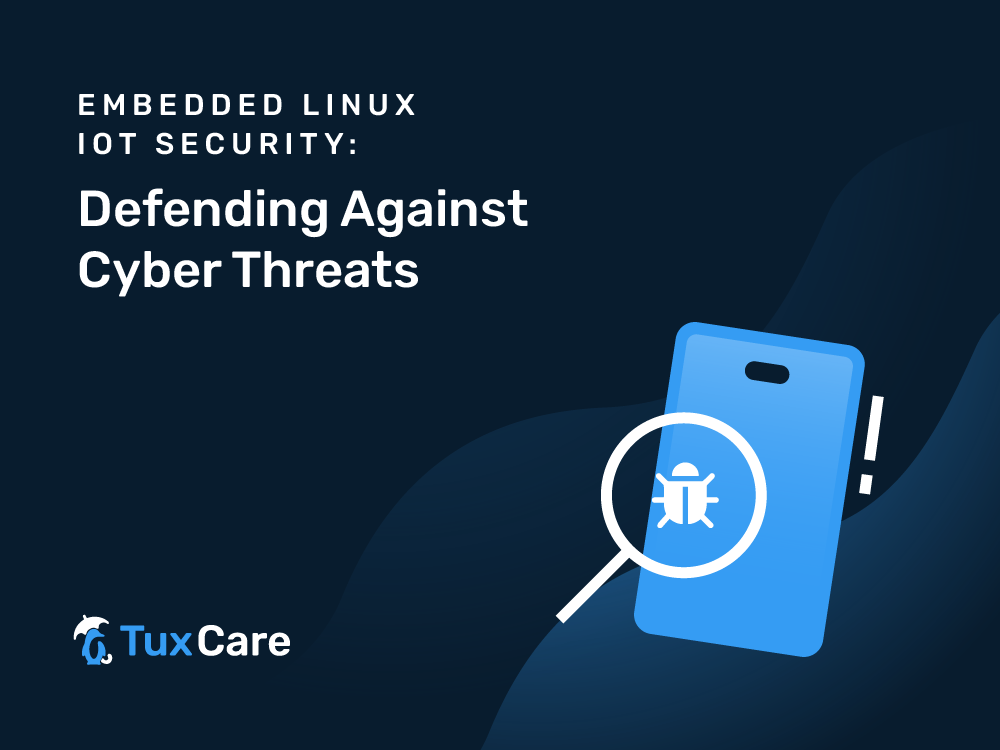Embedded Linux IoT Security: Defending Against Cyber Threats
- Embedded systems are vulnerable to network-based attacks.
- Containers provide an added layer of security to embedded systems.
- Hardware security modules can be used to protect embedded systems.
Embedded Linux IoT Security: Defending Against Cyber Threats
Embedded Linux IoT systems are now essential parts of many different kinds of products, from industrial machinery and smart appliances to medical equipment and automobile systems. However, as Embedded Linux is being used widely, it has attracted the attention of malicious actors, leading to an evolving threat landscape.
In the dynamic landscape of the Internet of Things (IoT), where devices are interconnected and exchange data seamlessly, ensuring the security of embedded Linux systems is paramount. With the proliferation of IoT devices, the risk of physical access by malicious actors has escalated, underscoring the critical need for a robust security framework.
This article covers key considerations and best practices to fortify embedded Linux security, mitigating vulnerabilities at both the hardware and software levels.
Embedded Linux for IoT Development
The term “Embedded Linux” describes the application of the Linux operating system to embedded systems, which are specialized computing devices made for particular tasks instead of being used for general purposes.
Embedded Linux is tailored to run on devices such as smart appliances, industrial machinery, medical devices, and other gadgets, unlike regular Linux, which you may use on a desktop or laptop computer. The word “embedded” denotes a tightly integrated operating system that fulfills a specific function within the device.
This allows these devices to perform specific tasks efficiently, benefiting from the stability, flexibility, and open-source nature of the Linux operating system. Embedded Linux has become popular because it provides a reliable foundation for various applications, from smart thermostats to complex machinery, enabling them to function smoothly and reliably.
Strategies and Tools for Embedded Linux Security
As embedded Linux IoT systems expand the number of devices connected to their environment, the attack surface increases – making it crucial to address security issues proactively. Some common threats are remote code execution, insecure network communication, and the compromise of cryptographic keys.
The following are the security practices you can adhere to in order to ensure the security of your embedded Linux systems:
Regular Updates and Patch Management
One of the most critical aspects of embedded Linux IoT security is keeping software up to date with the latest updates. Regularly applying security updates and patches help fix known vulnerabilities and improve the system’s defenses against emerging threats. Adopting an effective patch management strategy is necessary to ensure timely patches without disrupting critical tasks.
Organizations frequently encounter challenges in applying patches, as it typically involves downtime, which disrupts service for end-users. However, live patching is a solution which eliminates the need for patching-related reboots or downtime. TuxCare’s KernelCare IoT, a live patching tool, offers automated security patches for IoT systems using Linux without requiring a reboot.
Network Security Measures
Embedded systems are vulnerable to network-based attacks as they are often connected to networks. These risks can be minimized by using firewalls, intrusion detection and prevention systems, and proper network segmentation.
Containerization and Isolation
The use of containerization has emerged as an effective approach to improve the security of embedded Linux IoT systems. Applications and their dependencies can be isolated thanks to technologies like Docker and container orchestration tools like Kubernetes. This strategy reduces the potential impact of a compromised component and makes managing software updates and patches easier.
Hardware Security
Hardware-based security modules, such as HSMs (Hardware Security Modules) and TPMs (Trusted Platform Modules), are essential for safeguarding embedded Linux systems. HSMs offer secure key storage and cryptographic operations, while TPMs provide a safe environment for storing sensitive data and ensuring the integrity of the system.
Additionally, disabling the unused ports, such as JTAG and debug UART, helps restrict unauthorized access. By implementing these security measures, the embedded Linux security posture is improved.
Security Auditing and Code Analysis
Regular security audits and code analysis are helpful for finding software weaknesses and vulnerabilities in embedded Linux systems. Automated tools, such as static analysis and dynamic analysis tools, can help find potential security issues during the development stage. In addition, manual code reviews and penetration testing contribute to a more comprehensive security assessment.
Behavioral Analysis and Anomaly Detection
The abnormal patterns and actions within embedded Linux IoT systems can be recognized by integrating behavioral analysis and anomaly detection tools. These tools have the ability to identify deviations from normal behavior, which could indicate a security breach. These systems provide a dynamic protection mechanism by using machine algorithms to adapt and learn from new threats.
Initramfs and Root Filesystem Security
Initramfs, a temporary RAM-loaded filesystem, necessitates signing and verification to ensure its integrity. Encrypting the root filesystem provides an added layer of security, with options for read-only filesystems, squashFS, and vigilant handling of package-based updates.
Final Thoughts
Defending embedded Linux IoT systems against sophisticated cyber threats is an ongoing challenge. Organizations can greatly increase the resilience of their embedded systems by combining software-based protections, hardware-based security modules, patch management, and other proactive strategies. Due to the constantly shifting threat landscape, it is essential to stay informed about the latest security methods and continuously adapt defense techniques for maintaining bulletproof embedded Linux security.
Discover why live patching is a game changer as a cybersecurity strategy here.



 Documentation
Documentation Login
Login




